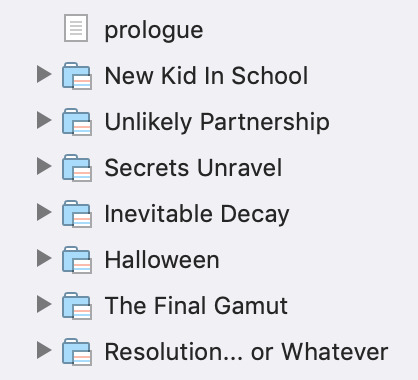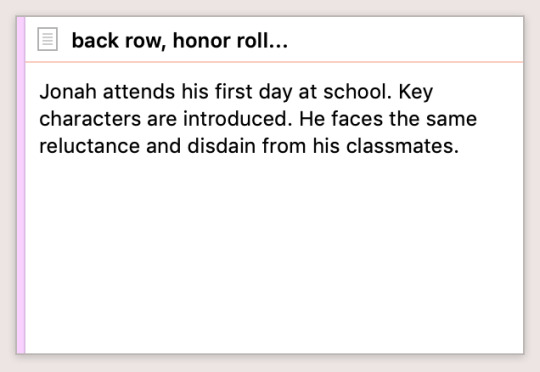#took me like 3 months to write this bc decay came in between and then. the horrors
Explore tagged Tumblr posts
Text
Hangman (~11K words) (Severing Hell's Leash AU)
Strick (der, masculine): German; noose. A loop with a running knot, tightening as the rope or wire is pulled and used to trap animals or hang people. Someone's noose is tightening, and he tied it himself.
Notes: Please note that I have changed certain terms regarding Angor’s magic — out of personal conviction and discomfort of using words originating in specific cultures. There will be an in-universe explanation provided, and I hope it won’t be too hard to get used to. I also will note that Strickler does not get a favorable depiction here. No flak to those who enjoy his character — I am simply not one of them, and if you don’t like him getting salt, this may not be the series for you.
#post let luce#my fic#tales of arcadia#trollhunters#angor rot#jim lake jr#severing hell's leash#<- au where angor gets his soul back in s1 ep22#(organizational tags end. please do not copy further. please do not copy 'my fic' tag)#took me like 3 months to write this bc decay came in between and then. the horrors#wrote 3.5k today bc i got a comment on the series and got motivated#and bc i had two nights in a row of good sleep <3 aint that swell#not tagging str*ckler bc this seems rude if anyone likes him enough to go into his tag lmao#still exhausted but happy i managed this
16 notes
·
View notes
Note
how do you plan out your books/wips bc I have a solid idea and pretty much a billeted list of what I want the plot to be and how my book goes but I’m lost at outlining everything in a coherent and organized way it’s highkey frustrating
okay i’m going to do my best to try and give some helpful tips here for how you can organize your thoughts, and i’ll take it from the perspective of both fics, novels, and just general story ideas! a lot of the principles i follow overlap, and obviously it differs by project (and by writer, for example me and my roommates have completely different outlining styles), this is just what has worked for me so far. hopefully it’ll give ya some things to chew on!
firstly, to make sure i’m orienting myself correctly -- from what i understand, it sounds like you’ve already got a sense of what your beginning, middle, and end is. not beat-by-beat, but the general gist of it. this is already a lot of progress, so kudos!! it can be hard to get from just that general warm and fuzzy and exciting idea phase to an actual concrete sense of what you want to plot to be, so feel good about that. it’s not easy work.
i think what you’re now trying to do is get your ideas down into a tangible format that you can follow to start actually working on it, yes? if so, here are some of my thoughts.
method #1: phase-by-phase, beat-by-beat method
i’m starting with the sort of straightforward outlining method here just because that’s what i’ve employed with quincy willows, so it’s most fresh in my mind. when it came to outlining quincy willows so i could start actually writing it down in concrete scenes, i decided to visualize my story by beat rather than by chapter or major plot points. “beat” is a sort of loose storytelling term that means different things to different people -- for me, it’s not a set “scene” (some beats include 2 - 3 scene changes), but more so an important emotional or context moment. this could be a reveal of information, it could be a relationship building scene, it just in some way drives the story forward even if its just the tiniest step.
how this ended up panning out was that i actually divided my full story into “phases.” these are sort of like the stereotypical “acts” in classic storytelling structure, but less strict on how they’re interpreted. so i can have 7 “phases” to quincy willows, for example:

for me, each of those reflects a distinct SECTION of the story where a major development is occurring plot wise, and sort of roughly reflects story structure. (new kid in school is through the “inciting incident”, unlikely partnership & secrets unravel is up to the midpoint, inevitable decay & halloween are the rising action, and the final gamut is the climax).
within each of those phases, there could be anywhere from 6 - 12 beats. by sort of outlining what the general progression of things would be and what beats i THOUGHT would be included where, i was able to create a good enough skeleton of an outline that i felt comfortable starting to actually write. but one thing i think is important to note is that the phases and beats are totally flexible. i’ve deleted beats entirely, i’ve moved beats between phases, i’ve added beats where i felt like something was missing. it’s a malleable outline, and i think you should never feel tethered to an outline. it’s a roadmap, but it’s not the only way to get to your destination. sometimes, your story will change on you, and that’s okay. hear it out! you can make the decision to stick to your original plan or adjust accordingly.
then, i’ll also say, once i have my general idea of my beats down i will go in and almost... like basically, every beat gets about three synopses. there is the “title,” which is the most basic, often quippy take on what is happening in the story. then i have the “logline,” which is the essence of the beat boiled down to one or two encompassing sentences. then, i have a greater description of what is happening in that scene emotional turning point by emotional turning point. so, to use qw again as an example:

this is the title (up top) and then the logline. when i go into the actual scene on scrivener, i have my notes about all the things that happen in the actual scene which i worked off of to write the scene. but even then, i don’t always follow the original idea of my notes explicitly. sometimes i don’t think an idea works all that great anymore by the time i’m actually writing it, and that’s okay. it’s flexible!
one thing i have loved about this outline structure is it allows me to write out of order. i can jump in and work on whichever beat feels fresh and exciting to my brain, which is so helpful for working on a long project that needs a complete draft from the get-go like quincy willows. however, on projects like fanfic where i can take my time, want to write and post in order, etc...
method #2: bare bones outline
full disclosure -- i have written all the lonely people with a bare bones outline since its inception. sure, i have a whole little doc where i wrote down all the major themes, plotlines, and emotional beats i wanted to cover, but as far as structuring it and deciding what would go into each chapter (especially the early chapters), i mostly winged it.
this is where a looser outline can be a nice approach. you sort of outline how long you want the project to be (i.e., atlp is 16 chapters), and you have a vague IDEA of the Major thing that will happen in each chapter (“11 and 12 are the back story chapters,” “10 is where the romantic tension will finally snap but also they’ll have their fallout that they have to come back,” “4 will be the first kiss”). but then you just start working on the beginning, and as ideas come to you you can toss them in the general realm of each chapter without explicitly outlining when each and every beat will happen. that allows you to start walking around in the world of your project and playing with the characters rather than waiting until you have a Perfectly Perfect outline. you know?
then, usually, when i prepare to write a new chapter (atlp... i’m coming for u in december baybee), i will examine the little beat ideas i had and try to construct a more concrete mini-outline of that chapter alone before diving in. sometimes i do, sometimes i don’t -- but it goes to show that depending on the story, you don’t need a super strict outline to follow.
but even then, if you’re still feeling lost, i feel like the most tried and true method is honestly...
method #3: let it marinate
it might very well be you’re just not yet ready to jump into actually digging the narrative yet. and that’s totally chill. i came up with the initial nugget of an idea for quincy willows in sept of last year, let it exist as a fic for about 4 months, and then took it down in like dec to start working on it as an original work (bc that’s really what it was). i then thought about it for 6 months until the outline jumped out of me basically fully formed over 2 days in early june. so that’s... 9 - 10 months of ruminating and thinking about character and worldbuilding and jotting down notes and making playlists and talking to friends -- that’s almost a whole year of just wiggling in the idea until i stretched it out enough to start seeing the writing on the wall.
i hope all of this is a help in some way, or at least gives you things to think about that guide you in the right direction for you! let me know if there’s any other way i can help or things you’d like advice on. i will try my best to articulate well and offer some insight haha. you got this, writer friend!!
#writing#writing tips#writeblr#writers of tumblr#writerblr#writing gabs#maggie.txt#i hope this makes sense LOL#other pals feel free to share ur methods + other ideas!#Anonymous#ask and you shall receive
8 notes
·
View notes